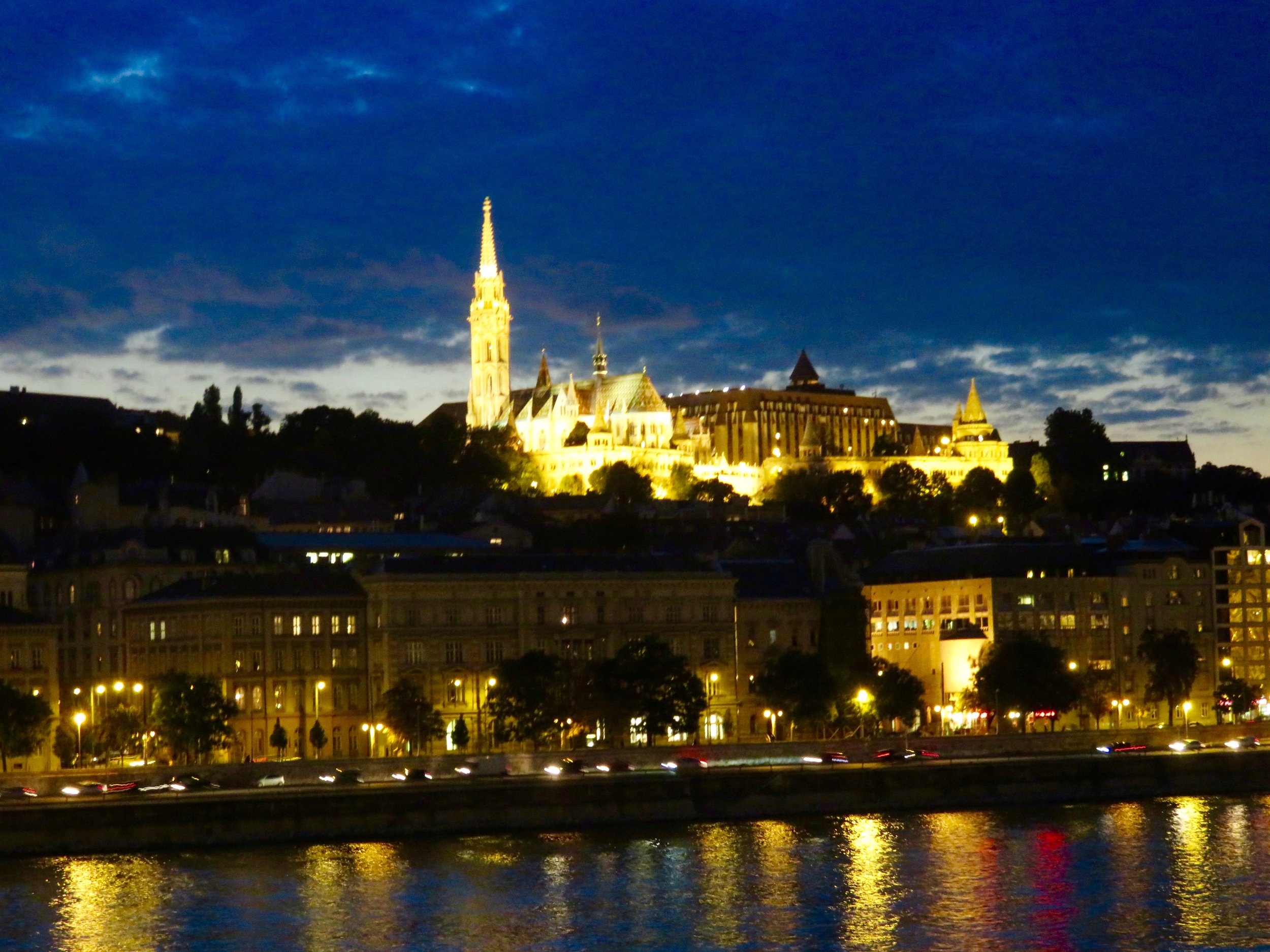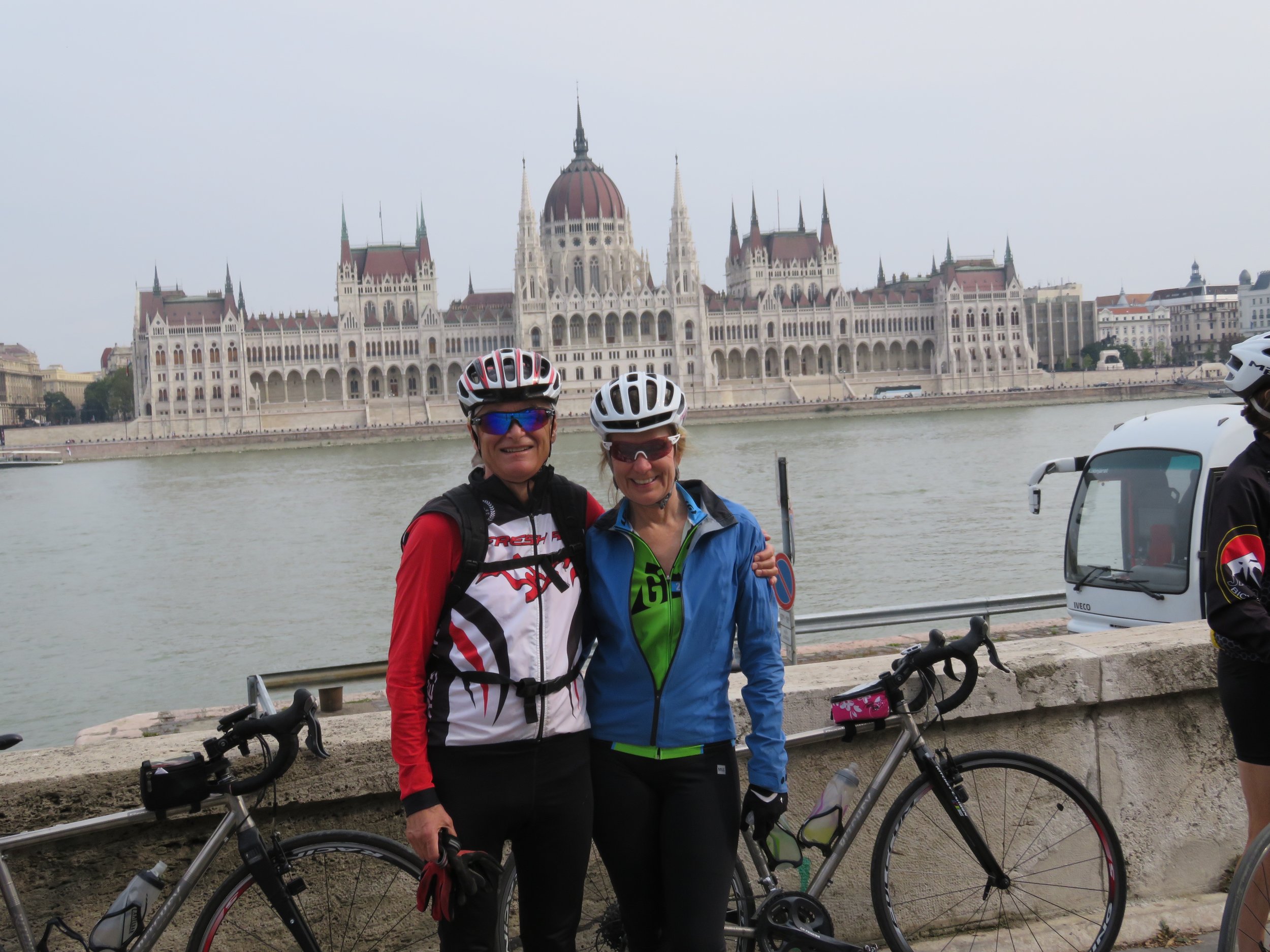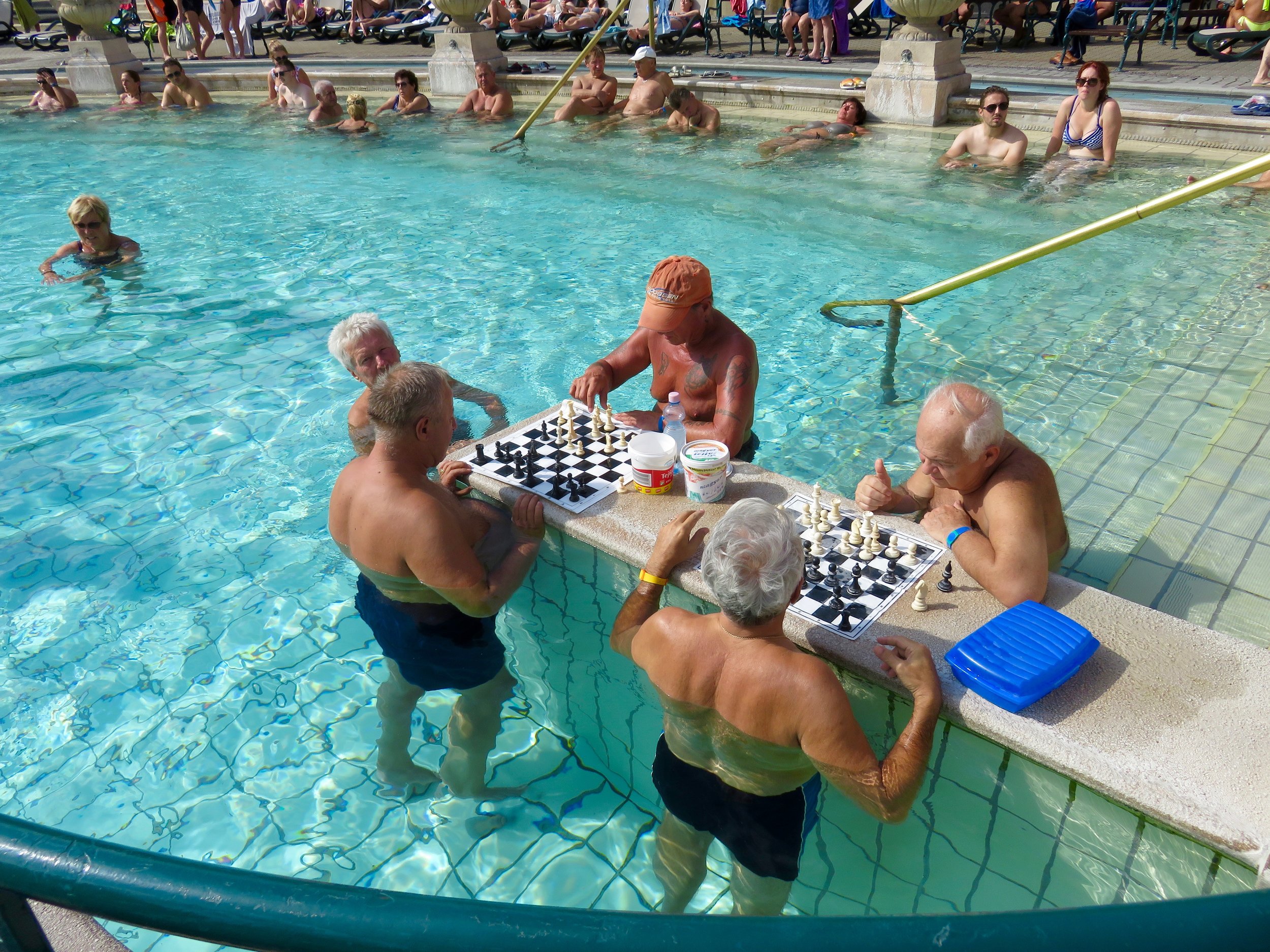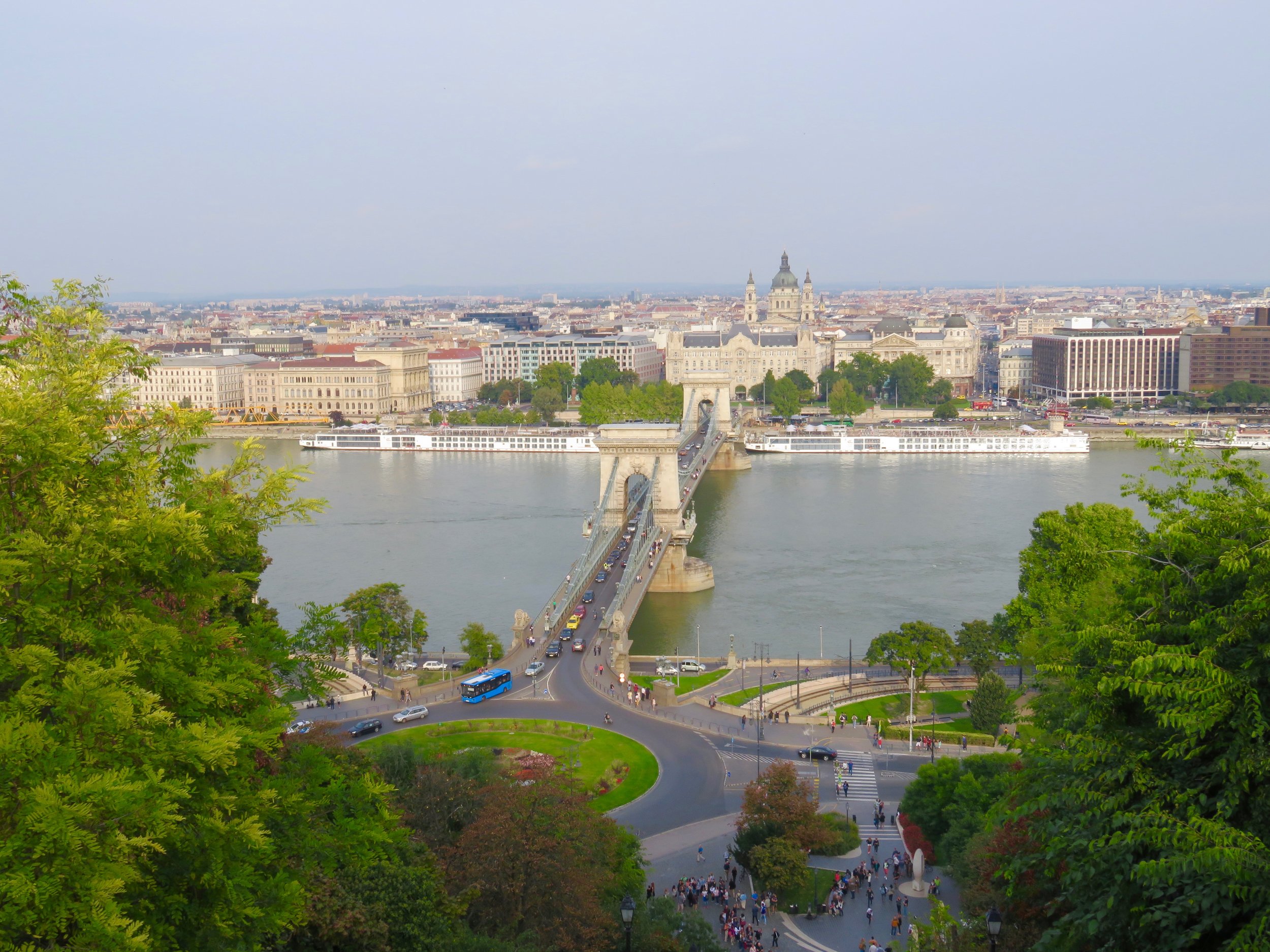Aaah, Budapest! The Grande Dame of Central Europe, Pearl of the Danube and blissful end of our 1,100 km cycling odyssey from Warsaw - through Poland, Slovakia and into Hungary. We spent four days there, recuperating. Good grief...I thought Poland was flat, which it was...but what I failed to consider, was the Tatra Mountains of Slovakia. By the time I rolled into Budapest, I was a tired, hurting unit. More about that in future posts.
Who knew Budapest was once two distinct cities, split by the Danube? I certainly did not...
Buda and Pest merged into one city 1873, but have managed to maintain their own distinct personalities. We stayed on the lower West Bank – on the hilly Buda side close to the Chain Bridge, a suspension bridge that spans the Danube and connects the two.
The Royal Palace and Castle District (...can you say Unesco World Heritage Site?) were perched high on the hill above our hotel. It was a bit of a trudge on cycle-weary legs (that felt more like fence posts, than living limbs), but the effort of the climb was worth it for the cobbled streets, ancient stone buildings and charming, Old World atmosphere of Buda.
The Palace, or what is left of it, was pounded to pieces in sieges by revolving-door conquerors. Mongols, Ottomans (Turks), Hapsburgs (Austrians), Germans and the Red Army of the Soviet Union - it seems everyone had a go at attacking it. It has been razed and rebuilt at least half a dozen times through the ages and now houses, among other things, a very cool museum that helped me better process the city’s turbulent history.
Buda’s counterpart, Pest (pronounced “Pesht”) is the bustling urban centre of the city - newer, prairie flat and buzzing with bars, cafes and gourmet eateries. When we arrived, I didn't think I'd mount a bike again, but on our last day in Budapest we rented a couple of cruisers and took a city bike tour. Our guide, very French, was foreshadowing of our future, post-Hungary. More about that soon, too!
Pest is stuffed with architecturally important buildings like St. Stephen’s Basilica (where we attended a brilliant organ concert, through which a certain unnamed individual snoozed), the Great Synagogue, the neo-Gothic Parliament Buildings and the elegant Hungarian State Opera House.
The entire city sits on thermal springs. It’s hot... literally! The bathing culture dates back to Roman and Turkish times. While there were plenty to choose from, we rewarded ourselves for surviving the biking trip with a soak at the opulent Széchenyi Baths.
Pools, thermal baths, saunas/steam rooms, ice plunges and a palatial building decorated like a yellow wedding cake - not only were the lavish facilities big, so were many of its patrons. Never in my life have I seen so many portly people squeezed into teeny-weeny suits! I was particularly fascinated by the beer bellied, speedo-sporting Hungarians playing soggy chess in the shallows and on the stairs of the gigantic hot pool. The entire experience was culturally enlightening and we left relaxed and hopeful the distinctly green tinge to the water was caused by health-enhancing minerals.
With Halloween on the horizon and spooky tales of the macabre and ghoulish rampant, my next post will be all about the maze-like caves and passageways beneath Buda-Hill...and their enigmatic prisoner. Here’s a teaser:
“The world seems full of good men, even if there are monsters in it.”
― Bram Stoker, Dracula –
Happy Thanksgiving, everyone!





